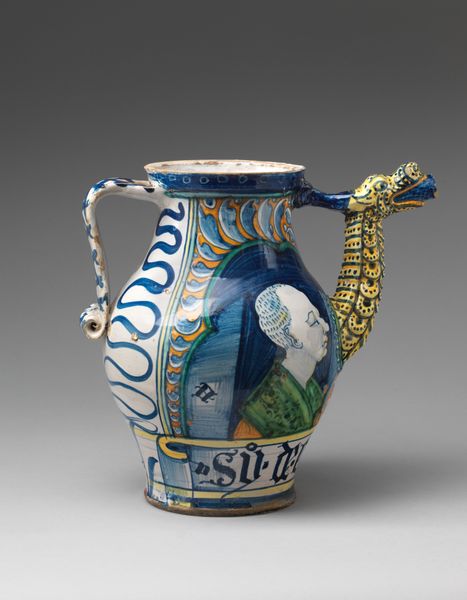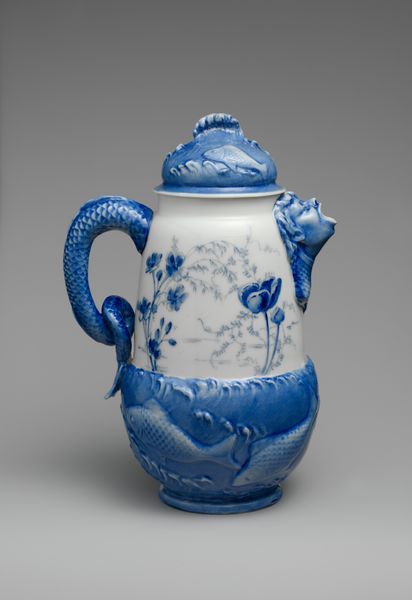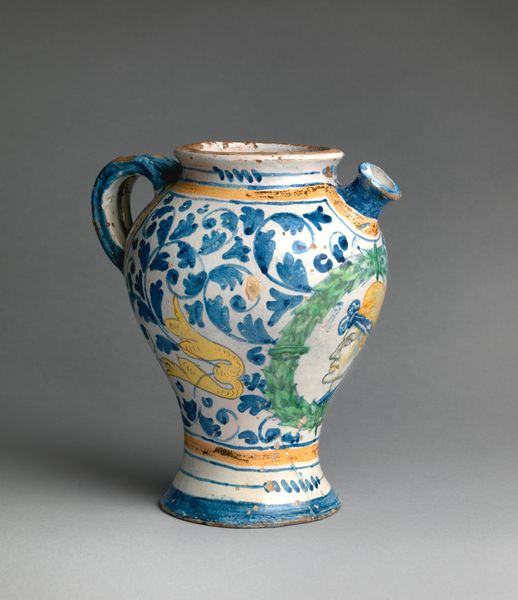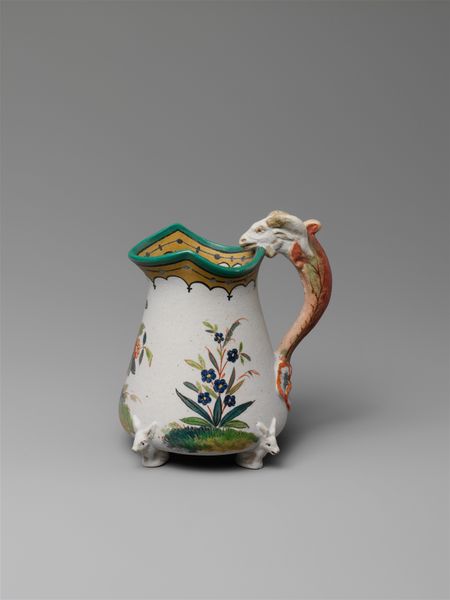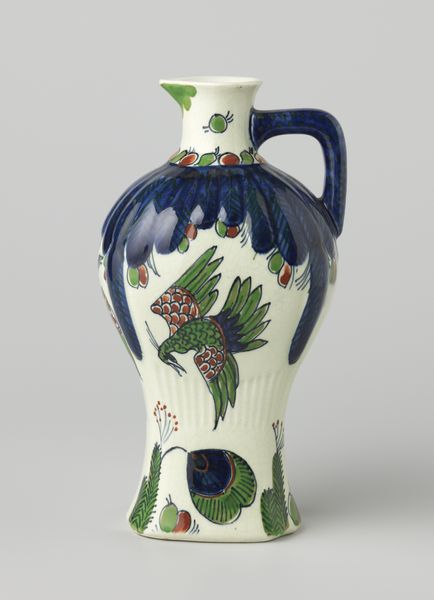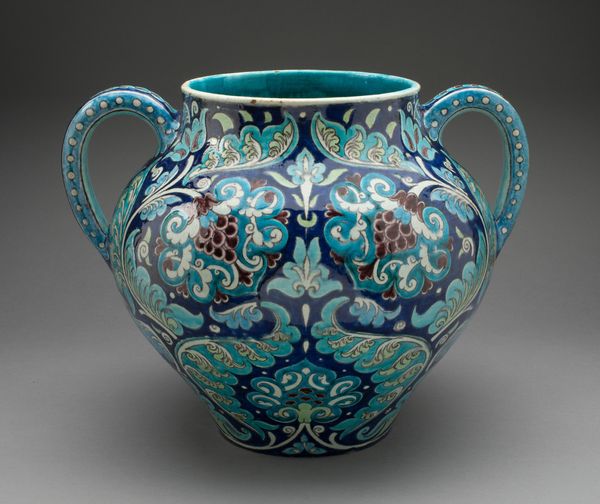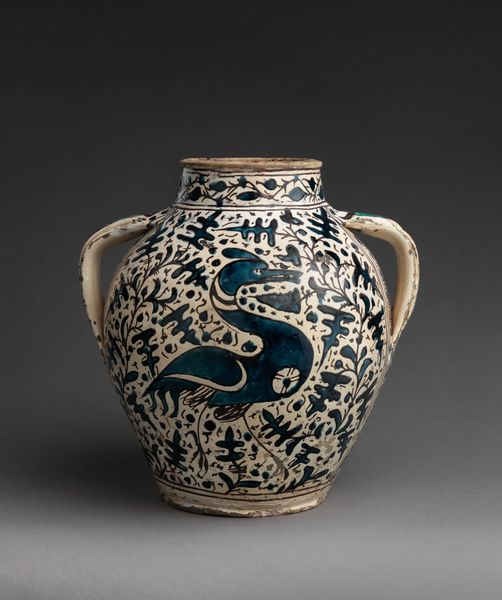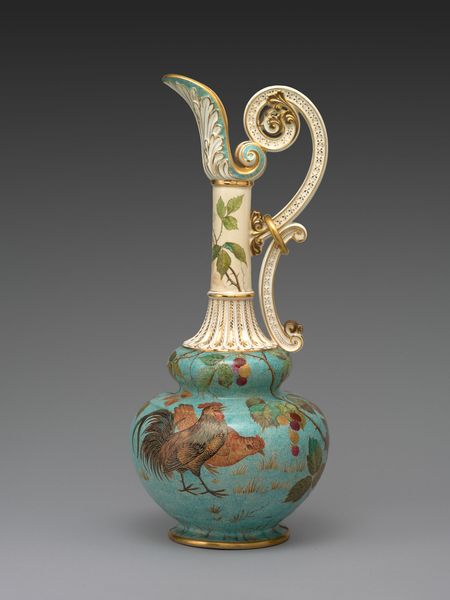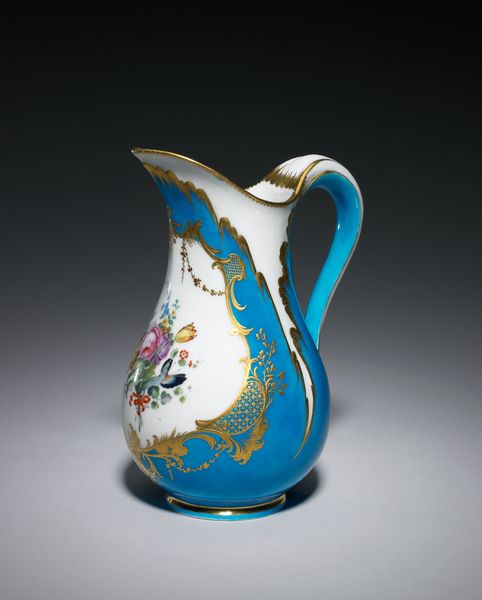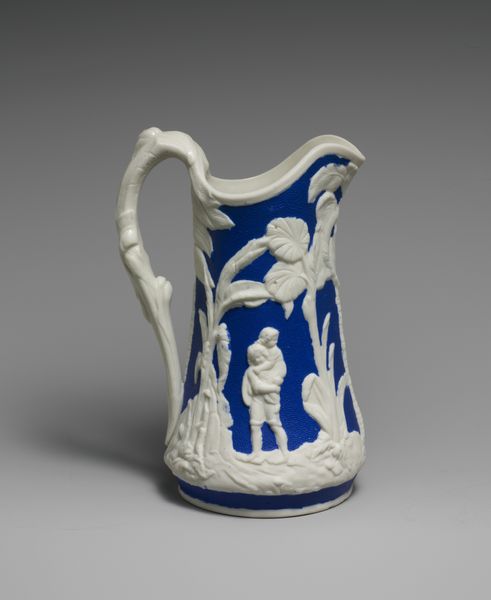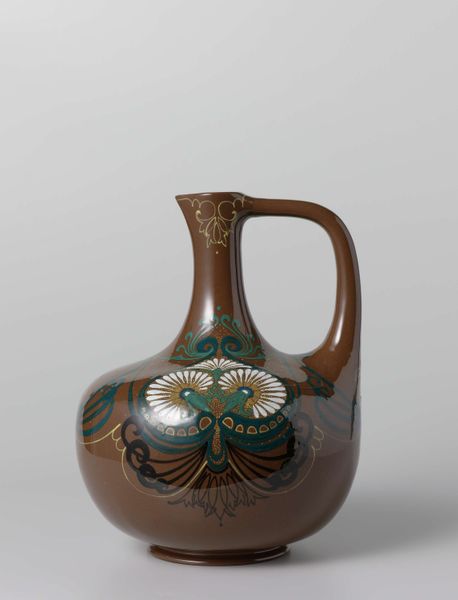
ceramic, sculpture
#
portrait
#
ceramic
#
11_renaissance
#
sculpture
#
decorative-art
#
italian-renaissance
Dimensions: Overall (confirmed): 10 1/2 × 6 7/8 × 9 3/4 in. (26.7 × 17.5 × 24.8 cm)
Copyright: Public Domain
This drug pot was made in Urbino, Italy, around the mid-16th century by Orazio Pompei, from glazed earthenware. Majolica like this was made by coating earthenware with a tin-based glaze, providing a smooth, white surface for painting. The vibrant colours and detailed imagery you see here required multiple firings in a kiln, each setting the painted decoration permanently into the glaze. Note the handle terminating in a dragon's head - this kind of sculptural addition would have demanded considerable skill, carefully applied and fired so it would not break. This wasn’t art for art’s sake. The pot would have contained medicinal ingredients, and its impressive design speaks to the rising status of pharmacists during the Renaissance, reflecting a society that greatly valued health, and one in which specialized labor was celebrated.
Comments
No comments
Be the first to comment and join the conversation on the ultimate creative platform.
